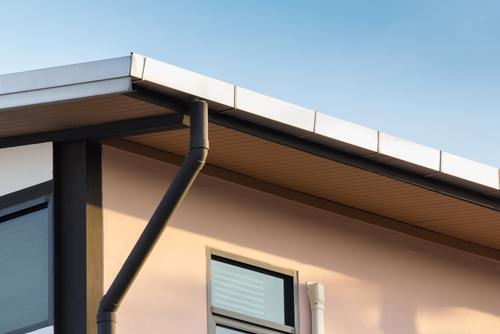Gutters and downpipes are your home’s first line of defence against leaks. They’re also the potential source of more trouble and expense than you would believe possible in terms of the risk of interior damage to your home.
Understanding the Risks
It’s almost impossible to overstate the risk factors. If a leak gets into the home, these are the real dangers:
- Contact with electrical systems. Water and electricity don’t mix. A leak in the right place can wipe out your electrical systems and require extensive repairs and safety checks. Some electrical shorts can even cause fires. The potential cost of repairs and replacing damaged systems can be truly staggering.
- Contact with timber supports and interior structures. Water can rot wood very effectively and warp structural timbers. Many modern homes have solid supports, but relatively slim structural timbers. A few timbers out of alignment can do real damage, in the tens of thousands of dollars range. In some parts of a structure, the damage can also cause a “house of cards” effect, pushing other timber out of alignment adding even more costs.
- Moulds, fungi, and mildew. These may not seem like major issues, but they can do astonishing damage and really make some parts of the home uninhabitable. Moulds and fungi destroy timbers. Fungi, for example, break down timber using enzymes that make termites look like lazy underachievers. This type of damage can occur where it can’t be seen, behind partitions and in other areas. Worse, the damage can also spread rapidly. Fungi and moulds also release spores that can activate allergic responses, causing misery for those prone to hay fever, asthma and other common conditions. Any mouldy smell should be checked out immediately. If you have respiratory issues, get a professional to check the problem for you. Don’t risk a potentially serious allergic issue for the price of a phone call.
Fixing Guttering and Downpipes
Professional roofers will tell you that any suspect guttering or downpipes are more trouble than they’re worth and should be replaced. In some cases, particularly with older installations, that’s good advice.
That said – Fixing guttering and downpipes can be done very efficiently, if these installations are otherwise OK:
- Thoroughly clean the guttering and clear the downpipes
- Replace damaged sections, ASAP
- Check flashings. They may have gaps or other issues
- Install gutter guards if you don’t have them, to reduce the risk of debris entering the guttering and downpipes.
- Check for any signs of leaks inside the house. Watermarks, stains or other tell-tale signs are fairly easy to spot. Also check for insulation issues, if possible, because leaks can do damage to insulation. Fix leaks and water entry points immediately. Just pick up the phone and get it done, and you’ll save yourself a lot of money.


